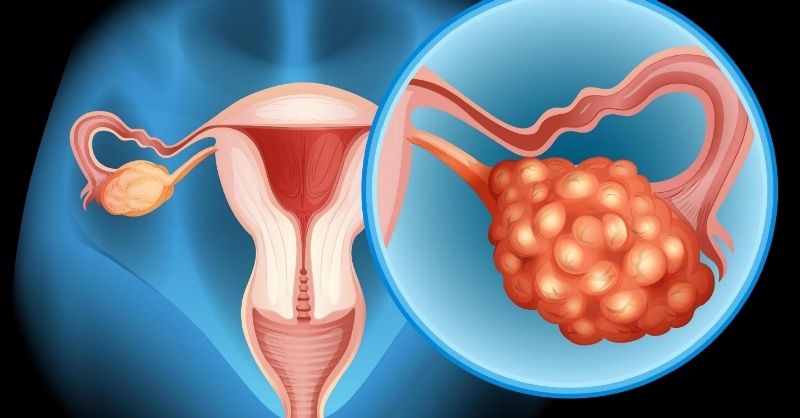Ovarian cancer is often called the “silent threat” because its early symptoms can be vague or mistaken for common health issues. It begins when abnormal cells in the ovaries start multiplying out of control. If not detected and treated early, these cells can spread to other areas of the body, making the disease more difficult to manage. Understanding the warning signs and risk factors is key to early intervention and improved outcomes.
Understanding Your Risk

Certain factors may increase a woman’s risk of developing ovarian cancer. Women over the age of 50, particularly those who have gone through menopause, are more commonly affected. Additionally, never having been pregnant, a history of using specific hormone therapies or fertility treatments, and family history may all contribute to increased risk. While risk does not guarantee diagnosis, being aware of these contributing factors helps promote timely screening.
Recognizing the Warning Signs

Ovarian cancer can manifest in a variety of ways. Many early symptoms affect the digestive and reproductive systems, but because they’re often subtle, they can easily be overlooked. Here are the key signs to watch out for:
- Persistent Bloating and Abdominal Swelling
Chronic bloating that doesn’t subside, along with visible or felt abdominal swelling, may be a red flag. If these symptoms occur frequently or without clear cause, it’s worth getting checked. - Digestive Disturbances
Unexplained changes in bowel habits, including recurring constipation or diarrhea, may point to underlying problems. When digestive discomfort is paired with sudden weight loss, it’s time to consult a doctor. - Increased Urinary Urgency
Needing to urinate more often than usual — especially if it’s sudden or urgent — can indicate ovarian abnormalities. If urination is accompanied by irritation, itching, or discomfort, don’t ignore it. - Pain During Intercourse
Experiencing pain or discomfort during sex isn’t just a relationship issue — it can also signal gynecological conditions such as ovarian cancer. Regular occurrences warrant medical evaluation. - Irregular Menstrual Patterns
Changes in menstrual flow or timing, especially bleeding between periods or after menopause, may result from hormone disruptions linked to ovarian tumors. - Unexplained Pelvic or Lower Back Pain
Ongoing pain in the pelvic region, abdomen, or lower back, especially if it cannot be traced to physical strain or known conditions, may suggest deeper issues requiring medical attention. - Breathing Changes in Later Stages
As ovarian cancer advances, tumors may grow large enough to exert pressure on nearby organs, including the lungs. This can lead to shortness of breath or chest discomfort. - Abnormal Vaginal Bleeding
Bleeding that occurs outside the menstrual cycle or has an unusual color or texture should never be ignored. It can be a sign of hormonal imbalance or more serious conditions like ovarian cancer.Ovarian cancer is often called the “silent threat” because its early symptoms can be vague or mistaken for common health issues. It begins when abnormal cells in the ovaries start multiplying out of control. If not detected and treated early, these cells can spread to other areas of the body, making the disease more difficult to manage. Understanding the warning signs and risk factors is key to early intervention and improved outcomes.
Understanding Your Risk

Certain factors may increase a woman’s risk of developing ovarian cancer. Women over the age of 50, particularly those who have gone through menopause, are more commonly affected. Additionally, never having been pregnant, a history of using specific hormone therapies or fertility treatments, and family history may all contribute to increased risk. While risk does not guarantee diagnosis, being aware of these contributing factors helps promote timely screening.
Recognizing the Warning Signs

Ovarian cancer can manifest in a variety of ways. Many early symptoms affect the digestive and reproductive systems, but because they’re often subtle, they can easily be overlooked. Here are the key signs to watch out for:
- Persistent Bloating and Abdominal Swelling
Chronic bloating that doesn’t subside, along with visible or felt abdominal swelling, may be a red flag. If these symptoms occur frequently or without clear cause, it’s worth getting checked. - Digestive Disturbances
Unexplained changes in bowel habits, including recurring constipation or diarrhea, may point to underlying problems. When digestive discomfort is paired with sudden weight loss, it’s time to consult a doctor. - Increased Urinary Urgency
Needing to urinate more often than usual — especially if it’s sudden or urgent — can indicate ovarian abnormalities. If urination is accompanied by irritation, itching, or discomfort, don’t ignore it. - Pain During Intercourse
Experiencing pain or discomfort during sex isn’t just a relationship issue — it can also signal gynecological conditions such as ovarian cancer. Regular occurrences warrant medical evaluation. - Irregular Menstrual Patterns
Changes in menstrual flow or timing, especially bleeding between periods or after menopause, may result from hormone disruptions linked to ovarian tumors. - Unexplained Pelvic or Lower Back Pain
Ongoing pain in the pelvic region, abdomen, or lower back, especially if it cannot be traced to physical strain or known conditions, may suggest deeper issues requiring medical attention. - Breathing Changes in Later Stages
As ovarian cancer advances, tumors may grow large enough to exert pressure on nearby organs, including the lungs. This can lead to shortness of breath or chest discomfort. - Abnormal Vaginal Bleeding
Bleeding that occurs outside the menstrual cycle or has an unusual color or texture should never be ignored. It can be a sign of hormonal imbalance or more serious conditions like ovarian cancer.
- Persistent Bloating and Abdominal Swelling

